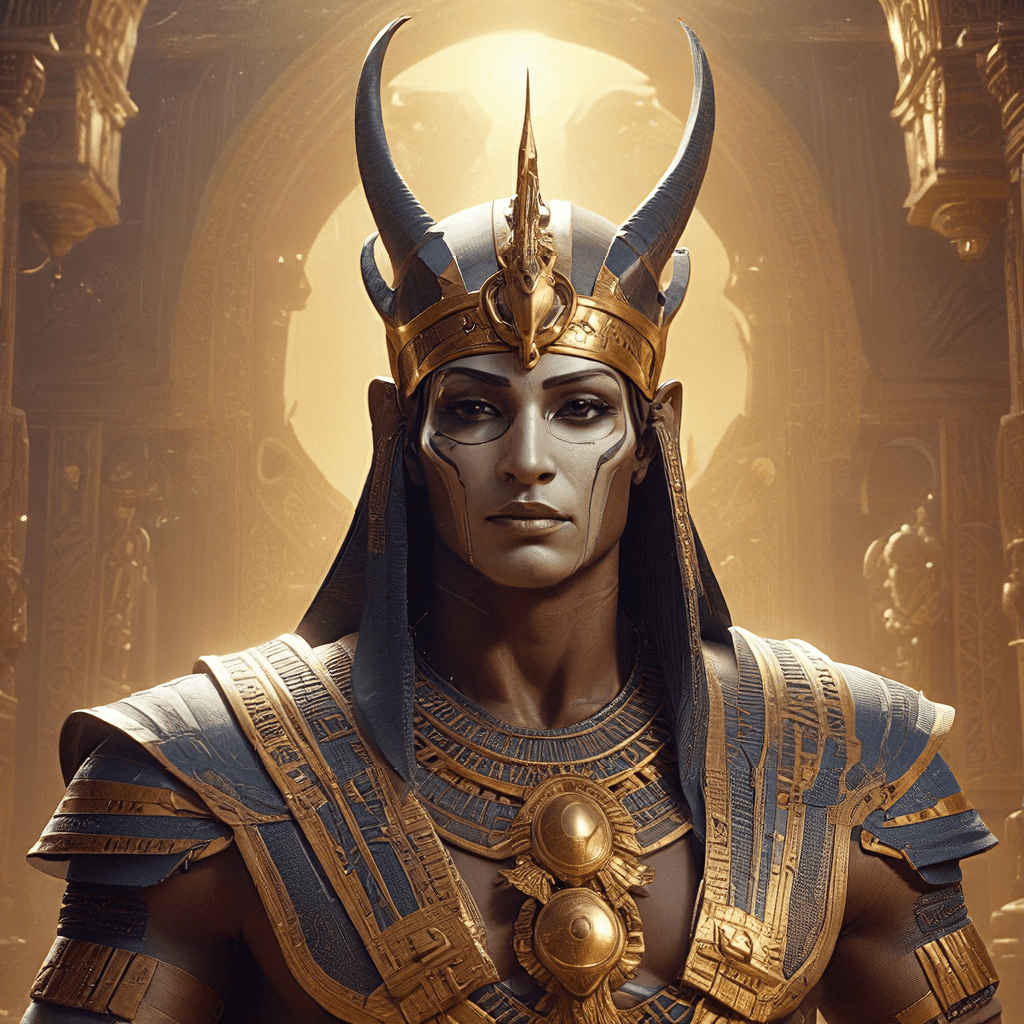I. Introduction: The Enigma of Osiris
In the vast tapestry of ancient Egyptian mythology, Osiris stands as a central figure, embodying the profound mysteries of life, death, and the eternal cycle. He is not only a powerful god but also a symbol of kingship, justice, and the fertile bounty of the Nile River. His story, steeped in drama and profound symbolism, offers a glimpse into the ancient Egyptians’ understanding of the afterlife and their belief in the cyclical nature of existence.
Osiris’s name itself hints at his powerful role: “Osiris” translates to “He who is,” suggesting his timeless and enduring nature. While associated with the afterlife, he is not solely a god of death. Instead, he represents the essential truth that death is not an end but a natural transition – a step in the eternal cycle of life, death, and rebirth.
II. Osiris’s Family and Divine Lineage
Osiris was born to Geb, the earth god, and Nut, the sky goddess. This divine parentage places him at the very heart of creation and underscores his significance in the Egyptian pantheon. He was not alone; he had siblings who played crucial roles in the unfolding of his destiny.
His sister and beloved wife, Isis, is a goddess of magic, motherhood, and healing. Their love story is one of the most enduring and poignant in Egyptian mythology. His brother Set, however, is a figure of chaos, violence, and darkness. Set’s envy and malice would ultimately lead to Osiris’s tragic demise. The other two siblings, Nephthys and Horus, would also become involved in the unfolding drama of Osiris’s life and death.
This family dynamic is central to Egyptian beliefs. The sibling relationships represent the diverse forces at play in the cosmos. They embody the tension between order and chaos, light and darkness, love and hate – fundamental elements that shape the universe and human experience.
III. The Reign of Osiris and the Golden Age
Osiris is often depicted as a benevolent king, a wise and just ruler who brought prosperity and civilization to ancient Egypt. His reign is often referred to as the “Golden Age,” a time of peace, abundance, and cultural flourishing. He taught the Egyptians the arts of agriculture, law, and medicine, introducing them to a more refined way of life.
Under his rule, the land thrived. The Nile River overflowed its banks, bringing life-giving water and fertile soil to the land, ensuring bountiful harvests. It was a time when the gods walked among men, teaching them to live in harmony with nature and with each other. Osiris’s reign stands as an ideal, a vision of a world where peace and justice prevail.
IV. The Treacherous Act of Set: Murder and Dismemberment
Set, Osiris’s brother, harbored deep envy and resentment towards his brother’s success and popularity. He watched with seething jealousy as Osiris’s reign brought happiness and prosperity to Egypt, a happiness he craved for himself. This envy festered within him, ultimately leading to a terrible act of treachery.
Set, in a fit of rage and jealousy, murdered Osiris. He then dismembered his body, scattering the pieces across the land of Egypt. This act of violence and desecration shocked the gods and horrified humanity. It represented not only the brutal reality of death but also the triumph of chaos and darkness over order and justice.
The dismemberment of Osiris is a powerful symbol of death and decay, reminding us of the fragility of life and the inevitability of decomposition. Each body part, scattered across the land, represents a different aspect of life being broken down. It is a reminder that even the most powerful and beloved can be brought low by the forces of darkness.
V. Isis’s Grief and the Resurrection of Osiris
Isis, the embodiment of love, devotion, and magic, was devastated by the murder of her husband. Her grief was profound, but her love for Osiris was even stronger. Driven by an unwavering determination to reunite with her beloved, she searched tirelessly for his scattered body parts.
Through the use of her powerful magic, she gathered the pieces of Osiris’s body, piece by piece. In a poignant act of love and devotion, she brought him back to life – a resurrection not of physical flesh but of a spiritual form. This mythical act of resurrection represents the belief that even in death, the spirit of a loved one can endure. It also emphasizes the power of love to overcome even the darkest of tragedies.
The resurrection of Osiris is a pivotal moment in Egyptian mythology. It reinforces the eternal cycle of life, death, and rebirth, the belief that even after death, there is a chance for renewal and transformation. It is also a testament to the enduring power of love, which can even transcend the boundaries of death itself.
VI. The Birth of Horus: Legacy and Divine Vengeance
Isis, with her divine powers, conceived Horus, Osiris’s son and heir. Horus was destined to avenge his father’s death and restore order to the world.
Horus’s struggle against Set was a long and arduous one. It represented the eternal battle between good and evil, light and darkness, order and chaos. The two gods engaged in a fierce and symbolic battle that encompassed both the physical and the spiritual realm. Ultimately, Horus emerged victorious, defeating Set and reclaiming his rightful place as king of Egypt.
Horus’s victory was a triumph for justice and a restoration of balance to the world. It symbolized the triumph of order over chaos, of good over evil. It also ensured the continuation of Osiris’s legacy, securing his place as a powerful and enduring figure in the Egyptian pantheon. Horus’s victory resonated with the ancient Egyptians, reminding them that even in the face of adversity, hope and justice could prevail.




